Total Water Levels Tool

The Total Water Levels (TWL) Tool helps you develop flood exposure analyses using the best available science for sea-level rise (SLR). You can analyze neighborhood, municipality-wide, and regional exposures to future flood hazards. You should NOT make site level engineering and design decisions.
Using the TWL tool you can create maps that illustrate three flooding types: permanent inundation (i.e., the future Mean Higher High Water line); high tide flooding (i.e., sunny-day flooding, nuisance floods); and extreme coastal flooding from storms (i.e., hurricanes and nor’easters). The TWL method is based on NOAA’s “What Will Adaptation Cost” guide and is consistent with the 2019 Science and Technical Advisory Panel report for sea-level rise in New Jersey.
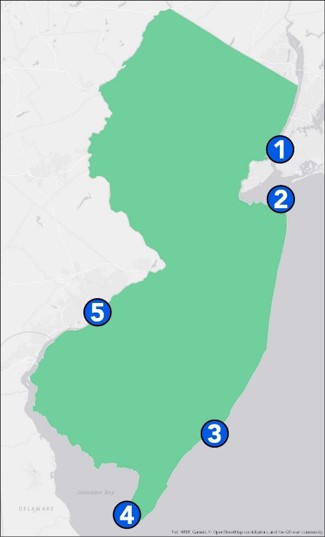
Select a NOAA Tide Gauge
Step 1 - Choose the nearest tide gauge to your analysis area OR select the ‘most suitable’ tide gauge based on your own judgment. For example, southern Monmouth County, NJ coastal flood height characteristics could be more similar to Atlantic City, even though the Sandy Hook gauge is in Monmouth County. If you are unsure of which gauge to choose, you should use the two closest gauges, and then choose the one that generates the highest water levels exposure analysis.
Step 1 of 5
Select Emission Scenario
Step 2 - The amount of future sea level rise is dependent on the amount of global greenhouse gas (GHG) emissions. Higher GHG emissions lead to larger and more rapid global temperature changes, resulting in higher SLR numbers.
- High GHG emissions - Corresponds to a future consistent with the strong, continued growth of fossil fuel consumption.
- Moderate GHG emissions - Corresponds to a future consistent with current global policies.
- Low GHG emissions - Corresponds to a future consistent with the global goal of limiting warming to 2°C above early industrial (1850-1900) levels.
Step 2 of 5
Select a Planning Horizon
Step 3 - Customize your planning horizon which is the decade you want to use for your analysis. Developing water levels for several different planning horizons is beneficial. As an example, you might choose:
- 2030 to represent a near-term planning horizon for assets that may be short-lived.
- 2050 to represent longer-term regional planning horizons (e.g., long-range transportation planning) or the life of a current 30-year mortgage. It is also the currently assessed point to which sea-level rise values are “locked in” regardless of whether emissions increase or decrease.
- 2100 to represent a planning horizon for long-lived assets that will last for decades or investments that need to be designed to adapt to uncertain long-term projections for sea-level rise.
- 2150 to represent a planning horizon considering multiple future generations and policy decisions through the early part of the next century.
Step 3 of 5
Moderate emissions
Select a Sea Level Rise Estimate
Step 4 Analyzing at least two sea-level rise estimates is beneficial. Choosing one estimate in the ‘likely’ range, along with the ‘high-end’ estimate will allow you to see how a range of SLR scenarios change community level exposures to flooding.
You can choose between the following SLR estimates:
‘High-End’ Estimates:
There is less than a 5% chance of exceeding the SLR height value indicated. Using a high-end estimate is especially important for planning assets with long lifetimes (e.g., a bridge), or limited ability to move out of harm’s way (e.g., a wastewater treatment plant).
Likely estimates:
- There is less than a 17% chance of exceeding the SLR height value indicated
- There is approximately a 50% chance of exceeding the SLR height value indicated
- There is at least an 83% chance of exceeding the SLR height value indicated
‘Low-End’ Estimate:
There is at least a 95% chance of exceeding the SLR height value indicated.
Step 4 of 5
Select a Flood Event
Historical Events
Step 5 - Choose between Flood Events Height using tide gauge specific data:
- Historical Storm flood heights (e.g., Sandy)
- Mean Higher High Water (MHHW)
- NOAA’s Annual Exceedance Probabilities (AEP), and
Flood event water levels are specific to each tide gauge and come from NOAA’s Extreme Water Levels statistics program. Mean Higher High Water reflects permanent inundation, or where residents’ feet will be wet on an almost daily basis. Selecting other water levels reflects recurring floods (i.e., the 99% AEP) or episodic flood events that could result from coastal storms (i.e., the 1% AEP). You can also choose historic flood events (like Sandy) to see how previous storms would look like in the future.
Step 5 of 5
Total Water Level Summary
Tide Gauge: Atlantic City, NJ Tide Gauge Total Water Levels Table
Emission Scenario: Moderate emissions
Timeframe: 2030 Planning Horizon
SLR Estimate: 83% Probability - 0.6 ft
Flood Event:
Total Water Level Estimate: N/A ft.
Total Water Level Estimate Mapper: N/A ft.
Results - The resultant Total Water Level is rounded to the nearest whole foot. The TWL inundation map represents ‘still water‘, which reflects the astronomical tide, the storm surge, and limited wave setup caused by breaking waves.
The Total Water Level does not portray wave runup, the movement of water up a slope. Therefore, the inundation mapping more closely corresponds to FEMA’s Still Water Flood Elevations (SWEL), not the Base Flood Elevation (BFE). Therefore, this analysis could under-represent the amount of inundation, as the calculations do not consider wave velocity and other dynamic effects from storms.
Summary
Layer Control Information
Map layers added to the map will appear in this window. The ordering of the layers on map can be controlled by clicking the up and down arrows next to each layer (when more than one layer is added). Layers can be temporarily turned on and off by clicking the appropriate button underneath the layer name.
Click the Remove button to remove the layer from the map. The transparency/opacity of each layer can be controlled with the slider below the layer name with 0% being fully transparent and 100% being fully opaque.
Select Unit of Analysis
Select the geography that you would like to use for your report or data download. Select from Counties, Municipalities, Rail Stations, or Custom Map Selection. For Rail Stations, you can select a catchment area of either .25 or .5 miles from the stations for which to analyze data for the report or data download.
Select Unit of Analysis
Select the geography that you would like to use for your report. Select from Political Boundaries, Transit Locations, or select a Custom Area. For Rail Stations, you can select a catchment area of either .25, .5, .75, or 1 mile from the stations for which to analyze data for the report.
Choose Data Topics
Select what data topics you would like included in your analysis. All data is from the US Census American Community Survey (2019, 5-Year Estimates). See details of each below:
- Race / Language - Data on minority population and makeup, and population that speaks English less than very well.
- Housing / Vehicle - Data household size by tenure, housing unit sizes, and households with no vehicles.
- Income Data - Data on average household income by tenure and race.
- Disability / Aging Population - Data on population over 65 and population by disability impairment.
Select Data Topics
Select what data topics you would like included in your report or data download. See details of each below:
- Development Data - Includes development data (when available) and Parcel Tax Record Data (MOD IV) tax record data
- Demographic Data - Includes U.S. Census American Community Survey 5-Year Estimate data for various population and housing variables.
- Travel Data - Includes Census Transportation Planning Products Program (CTPP) data on auto ownership and mode of transportation for workers.
- Economic Data - Includes U.S. Census Longitudinal Employer-Household Dynamics (LEHD) data on job earnings and housing costs
- Environmental/Planning Data - Includes information on land use/cover, brownfields and contaminated sites, open space/preservation, redevelopment/rehabilitation areas, transit villages, and urban enterprise zones.
- Ridership Data [Rail Station Only] - Includes annual boardings for rail stations and ridership data for the rail lines.
Generate Report / Data Download
Generate Report will create a custom report based on the unit of analysis and data topics selected. The report is printer-friendly and the graphs are interactive.
Each graph has a small menu button in the upper right of the graph. Clicking the button will provide you with options to print the chart or to download the chart in various image file (PNG and JPG) and document formats (PDF and SVG).
Generate Download will create a zip file for download that will contain all the raw data for the unit of analysis and data topics selected. Each source of data will be in a CSV formatted text file and will be in folders organized by data topic area.
Selection Tools
Tools for selecting multiple geographic features from the Selectable Map Layers for use in the Download/Report Tool, Corridor Planning Tool, TOD Opportunity Tool, and Social Justice Tool.
The following tools are available:
- Point Selection - Select a single feature by clicking a point on it.
- Line Selection - Select features by drawing a straight line. To draw, click and drag the mouse cursor on the map after selecting this tool.
- Freehand Line Selection - Select features by drawing a freehand line. To draw, click and drag the mouse cursor on the map after selectin this tool.
- Circle Selection - Select features by drawing a circle. To draw, click and hold where you would like the center of the circle and then drag the mouse to set the radius.
- Freehand Polygon Selection - Select features by drawing a freehand polygon. To draw, click and drag the mouse cursor to create the outline of the shape you would like.
- Clear - Clear your current selection.
Basemap Layers
Select from various basemap layers to be displayed on the mapping interface. For information on other basemaps please see https://arcg.is/11iLrH
-
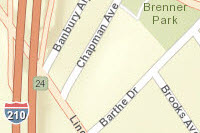 Streets -
This map features highway-level data for the world and street-level data for North America, Europe, and other parts of the world.
Streets -
This map features highway-level data for the world and street-level data for North America, Europe, and other parts of the world. -
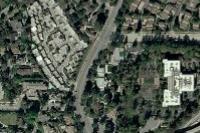 Satellite -
This map features satellite imagery for the world and high-resolution aerial imagery for many areas.
Satellite -
This map features satellite imagery for the world and high-resolution aerial imagery for many areas. -
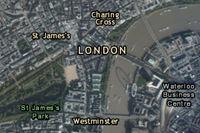 Hybrid -
This map features satellite and high-resolution aerial imagery for the world with political boundaries and place names for reference purposes.
Hybrid -
This map features satellite and high-resolution aerial imagery for the world with political boundaries and place names for reference purposes. -
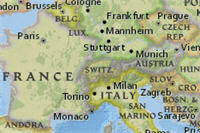 National Geographic -
This map features the National Geographic World Map, which is a cartographically rich and distinctive reference map of the world.
National Geographic -
This map features the National Geographic World Map, which is a cartographically rich and distinctive reference map of the world. -
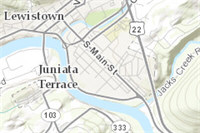 Topographic -
This topographic map is designed to be used as a basemap and a reference map.
The map has been compiled by Esri and the ArcGIS user community from a variety of best available sources.
Topographic -
This topographic map is designed to be used as a basemap and a reference map.
The map has been compiled by Esri and the ArcGIS user community from a variety of best available sources. -
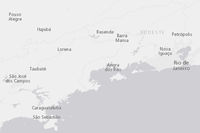 Gray -
This map is designed to focus attention on your thematic content by providing a neutral background with minimal colors, labels, and features.
Gray -
This map is designed to focus attention on your thematic content by providing a neutral background with minimal colors, labels, and features. -
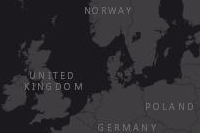 Dark Gray -
This map is designed to focus attention on your thematic content by providing a neutral background with minimal colors, labels, and features.
Dark Gray -
This map is designed to focus attention on your thematic content by providing a neutral background with minimal colors, labels, and features. -
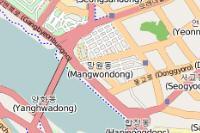 Open Street Map -
This web map references the live tiled map service from the OpenStreetMap project.
OpenStreetMap (OSM) is an open collaborative project to create a free editable map of the world.
Open Street Map -
This web map references the live tiled map service from the OpenStreetMap project.
OpenStreetMap (OSM) is an open collaborative project to create a free editable map of the world. -
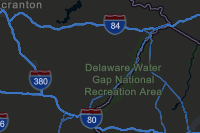 Streets Night - This web map provides a detailed vector basemap for the world featuring a custom “night time” street map style.
Streets Night - This web map provides a detailed vector basemap for the world featuring a custom “night time” street map style. -
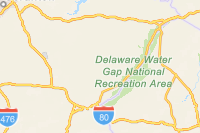 Streets Navigation - This web map provides a detailed vector basemap for the world featuring a custom navigation map style.
Streets Navigation - This web map provides a detailed vector basemap for the world featuring a custom navigation map style.
Transportation Layers
Select from various transportation layers that can be added to the map interface and that allow for interactive selection. Users can view more detailed information about either stop/stations or lines/routes by clicking on them on the map interface.
The following transportation layers are available:
- NJ TRANSIT Bus – Includes all NJ TRANSIT Bus stops and routes (will not be available until zoomed in on map)
- NJ TRANSIT Light Rail – Includes the Hudson Bergen Light Rail, Newark Light Rail and River Line Light Rail systems.
- NJ TRANSIT Commuter Rail – Includes all NJ TRANSIT commuter rail systems
- HF Bus - Inter-state BETA - NJ TRANSIT bus corridors that provide direct high frequency service during weekday, peak AM service times from within New Jersey to out-of-state business centers such as NYC and Philadelphia. Corridors shown by the number of high frequency stops per mile.
- HF Bus - Multi-modal BETA - NJ TRANSIT bus corridors that provide high frequency service during weekday, peak AM service times to one-hop multi-modal transfer locations (commuter rail, ferry, etc.) that provide direct service out-of-state business centers such as NYC and Philadelphia. Corridors shown by the number of high frequency stops per mile.
- HF Bus - Intra-county BETA - NJ TRANSIT bus corridors that provide high frequency service during weekday, peak AM service times to intra-county destinations only. Corridors shown by the number of high frequency stops per mile.
- MTA Metro-North Railroad – Includes portions of Metro-North lines and stations west of the Hudson River operated under contract by NJ TRANSIT Rail Operations
- PATH – Includes all NJ and NY PATH stations and lines
- PATCO – Includes PATCO stations and lines from NJ into Philadelphia
- SEPTA Regional Rail – Includes SEPTA stations and lines from Trenton to Philadelphia
- Private Ferry Services – Includes NJ terminals for the NY Waterway and NY Seastreak Ferries
Development Data
Development Data consists of aggregated data from planning and zoning applications for municipalities that data has been collected for. All data is presented at the parcel block level. The following data elements are available:
- Number of Residential Units - The total number of residential units proposed by planning or zoning applications for the given parcel block.
- Sq. Ft. Retail - The total square feet of retail space proposed by planning or zoning applications for the given parcel block.
- Sq. Ft. Office - The total square feet of office space proposed by planning or zoning applications for the given parcel block.
- Sq. Ft. Industrial - The total square feet of industrial space proposed by planning or zoning applications for the given parcel block.
- Sq. Ft. Other - The total square feet of other space proposed by the planning or zoning applications for the given parcel block.
Travel Data
Travel Data consists of data elements pulled from the Census Transportation Planning Products Program (CTPP) [2016] and is presented at the Census Tract level. The following data elements are available:
- Auto-Ownership - Data on the number of households with the specified number of vehicles available (0, 1, 2 or more).
- Travel Mode for Workers: Residence - Data on the number of workers that reside in that Census Tract that take the specified mode of transportation to reach their place of work.
- Travel Mode for Workers: Workplace - Data on the number of workers whose workplace is in that Census Tract that take the specified mode of transportation to reach their place of work.
Traffic Layers
- Annual Average Daily Traffic (500 Routes) - The average annual daily traffic in New Jersey in 2017 across 500 routes.
Demographic Data
Demographic Data consists of data elements pulled from the U.S. Census American Community Survey 5-Year Estimated data and is presented at the Census Block Group level. Data is segregated into [Population], [Household], and [Housing Unit] data based on the unit of analysis. The following data elements are available:
- [Population] Total Population - Total estimated population by Census Block Group
- [Population] Male/Female - Estimated male or female population by Census Block Group
- [Population] Age - Estimated population by age range by Census Block Group
- [Population] Race - Estimated population by race by Census Block Group
- [Population] Ethnicity: Hispanic/Latino - Estimated population of Hispanic or Latino ethnicity by Census Block Group
- [Population] Population in Occupied Housing Units - Estimated population in occupied housing units by Census Block Group
- [Household] Average Household Size - Average household size by Census Block Group
- [Household] Median Household Income - Median household income by Census Block Group
- [Household] Occupied Housing Units - Number of occupied housing units with breakdowns by owned and rented units by Census Block Group
- [Household] Vacant Housing Units - Number of vacant housing units with a breakout of vacant seasonal housing units by Census Block Group
- [Household] Housing Units - Number of housing units by type/size by Census Block Group
- [Household] Moved - Number of households that moved into their current housing unit by year range by Census Block Group
Other Data Layers
- Land Use/Land Cover 2012 - Land use/land cover data from 2012 that specifies primary land use type with breakouts for the different types of Urban land use.
- Land Use/Land Cover 2007 - Land use/land cover data from 2007 that specifies primary land use type with breakouts for the different types of Urban land use.
- Brownfield Extent/Area - Areas designated as Brownfield Redevelopment Areas.
- Known Contaminated Sites - Point locations of known contaminated sites in New Jersey
- Open Space - Areas designated as State and County owned open space
- Preserved Farmland - Parcels protected by the state farmland preservation program.
- Redev. / Rehab. Areas - Areas identified as in need of redevelopment or rehabilitation.
- Transit Village Boundaries - Transit Village centers and associated half mile boundaried
- Urban Enterprise Zones - Areas designated as Urban Enterprise Zones.
Selectable Map Layers
Select from various geographic map layers that can be applied to the map interface and that allow for interactive selection. Users can either individually select a geographic feature on the map or use the Selection Tools toolbar to select multiple geographic features to be used in the Download/Report Tool.
Please note that county and municipal boundaries may not line up with Census Block Groups since they are created using different methodologies by different government agencies.
The following map layers are available for selection:
- County Boundaries
- Municipal Boundaries
- Census Block Groups (will only be available when zoomed in on map)
- Parcel Blocks (will only be available when zoomed in on map)
Property Class
- 1: Vacant Land
- 2: Residential (4 families or less)
- 3A: Farm (Regular)
- 3B: Farm (Qualified)
- 4A: Commercial
- 4B: Industrial
- 4C: Apartment
- 5A: Class I Railroad Property
- 5B: Class II Railroad Property
- 6A: Personal Property Telephone
- 6B: Machinery, Apparatus, or Requipment of Petroleum Refineries
- 6C: Phase Out Personal Property
- 15A: Public School Property
- 15B: Other School Property
- 15C: Public Property
- 15D: Church and Charitable Property
- 15E: Cemeteries and Graveyards
- 15F: Other Exempt Properties
Welcome to New Jersey’s Transit Friendly Data Application
New Jersey’s Transit Friendly Data Application allows users to map, report, and download a range of land use, travel, public transit, demographic, and real estate development data. The data available in the application are useful to elected officials, community and economic development professionals, real estate developers, land use planners, transit service planners, and others engaged in the land use and transportation planning process.
New Jersey’s Transit Friendly Data Application was developed by researchers from the Alan M. Voorhees Transportation and the Office of Research Analytics at Rutgers University, in partnership with NJ TRANSIT and the North Jersey Transportation Planning Authority. Funding for the application was provided by NJ TRANSIT and the Federal Highway Administration.

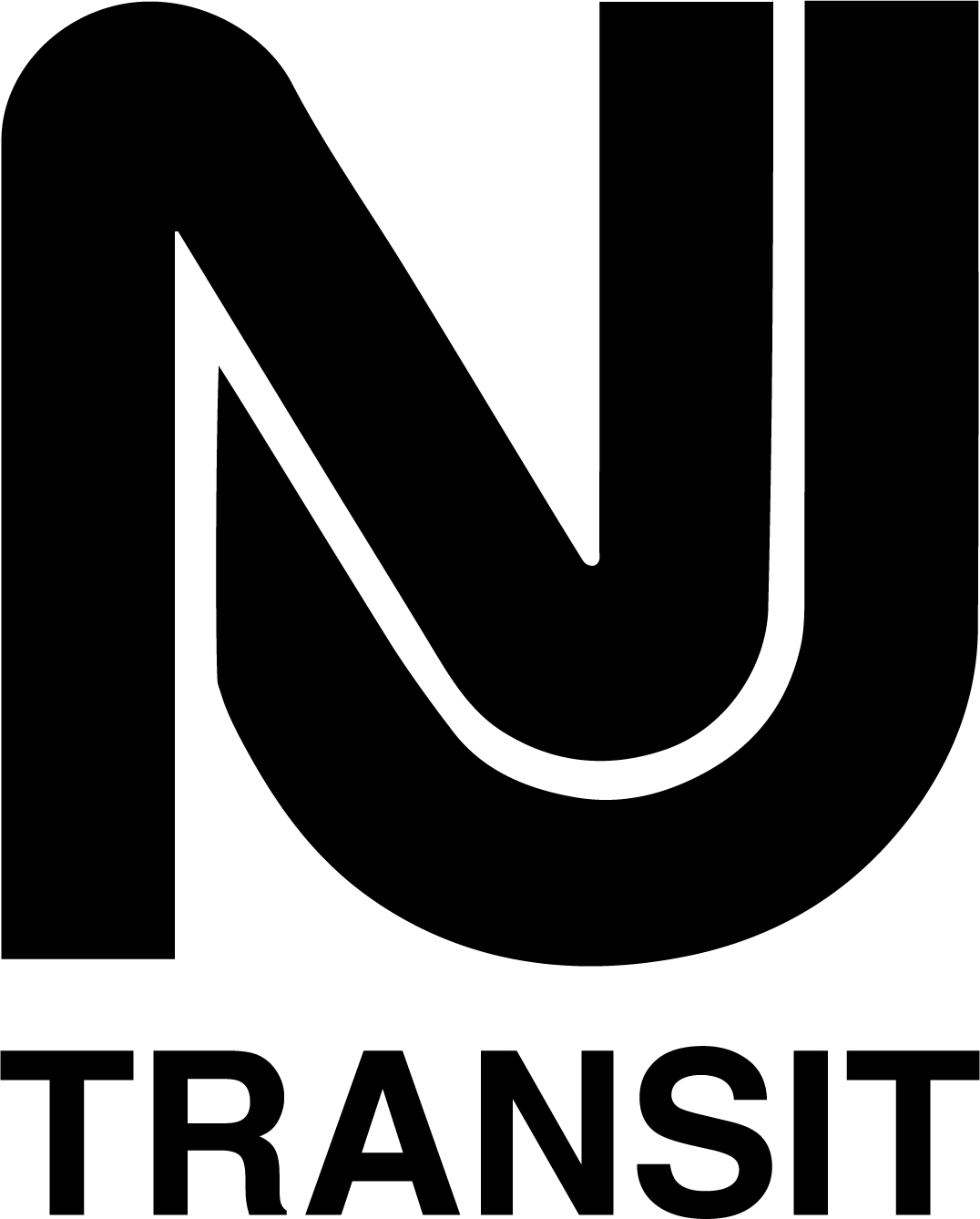
Layer Control
Corridor Planning Tool
Create your own lines and stations.Link to Save Analysis:
Please choose between creating a new route or adding a new stop/station to an existing route:
You will be designing a new route from scratch.
Please select an Organization (and a Line if available) to get started.
1. Draw the transit route on the map:
Length: N/A
2. Draw the transit stops/stations on the map:
| ID | Name | Lat. | Long. |
|---|
Number of Stations: 0 Stations
3. Select the analysis types to perform:
TOD Opportunity Tool
TOD Opportunity tool.Link to Save Analysis:
Select a transit location from the map:
Select a location from the map:
| Latitude: | N/A |
|---|---|
| Longitude: | N/A |
| Radius (Miles): | N/A |
Download / Report Tools
Use the options below to get download data or generate a report.Social Justice Controls
Data Details
Total Water Levels Tool
Add layer to the map that contains the Total Water Level based on your scenario options below.Total Water Level: XX Ft.
Summary Panel
Tide Gauge: Atlantic City, NJ
Emission Scenario: Moderate emissions
Timeframe: 2030 Planning Horizon
SLR Estimate: 83% Probability 0.6 ft above MHHW
Flood Event:
Total Water Level Estimate: N/A ft.
Total Water Level Estimated Mapped (nearest ft.): N/A ft.
Tide Gauge Selection

Choose the nearest tide gauge or the ‘most suitable’ tide gauge based on your own experience and judgement.
Emission Scenario Selection
Choose an emissions scenario based on future fossil fuel use and policy decisions.
- High GHG emissions - Corresponds to a future consistent with the strong, continued growth of fossil fuel consumption.
- Moderate GHG emissions - Corresponds to a future consistent with current global policies.
- Low GHG emissions - Corresponds to a future consistent with the global goal of limiting warming to 2°C above early industrial (1850-1900) levels.
Timeframe Selection
Select Planning Horizon
Choose an appropriate planning horizon relevant to your planning task.
2030 to represent a near-term planning horizon for assets that may be short-lived.
2050 to represent longer-term regional planning horizons (e.g., long-range transportation planning) or the life of a current 30-year mortgage. It is also the currently assessed point to which sea-level rise values are “locked in” regardless of whether emissions increase or decrease.
2100 to represent a planning horizon for long-lived assets that will last for decades or investments that need to be designed to adapt to uncertain long-term projections for sea-level rise.
2150 to represent a planning horizon considering multiple future generations and policy decisions through the early part of the next century.
Sea Level Estimate Selection
Moderate emissions
Select a sea level rise estimate based on the level of risk tolerance for your planning project.
Flood Event Height Selection
Select a flood event height (Annual Exceedance Probability - AEP), Historic Storm event, or a custom flood event height to add to your selected sea level rise estimate:
Historical Events
 Transit Friendly Planning Data App
Transit Friendly Planning Data App

Drawing In Progress
You can complete your drawing or click here to go back to the tool: